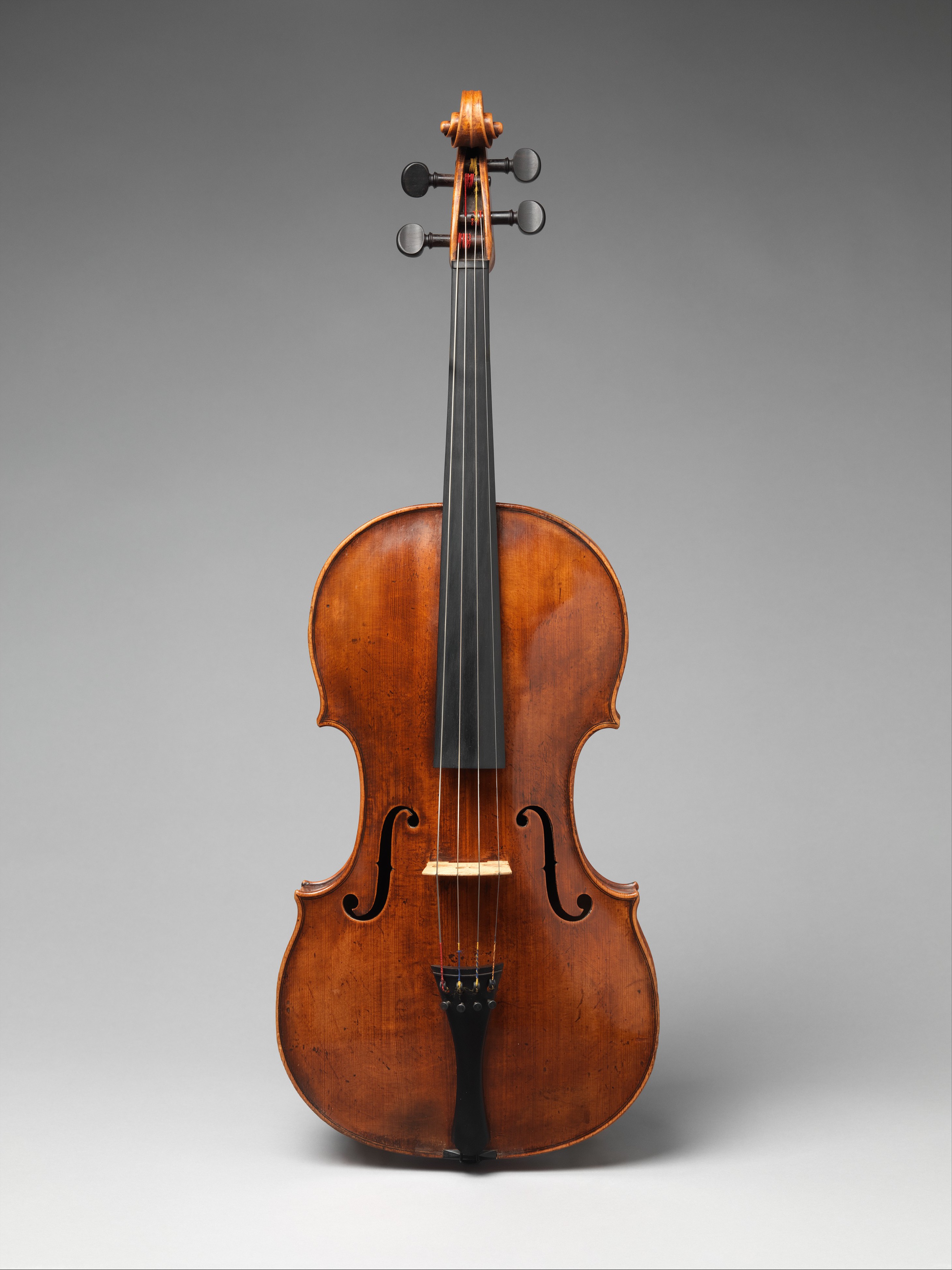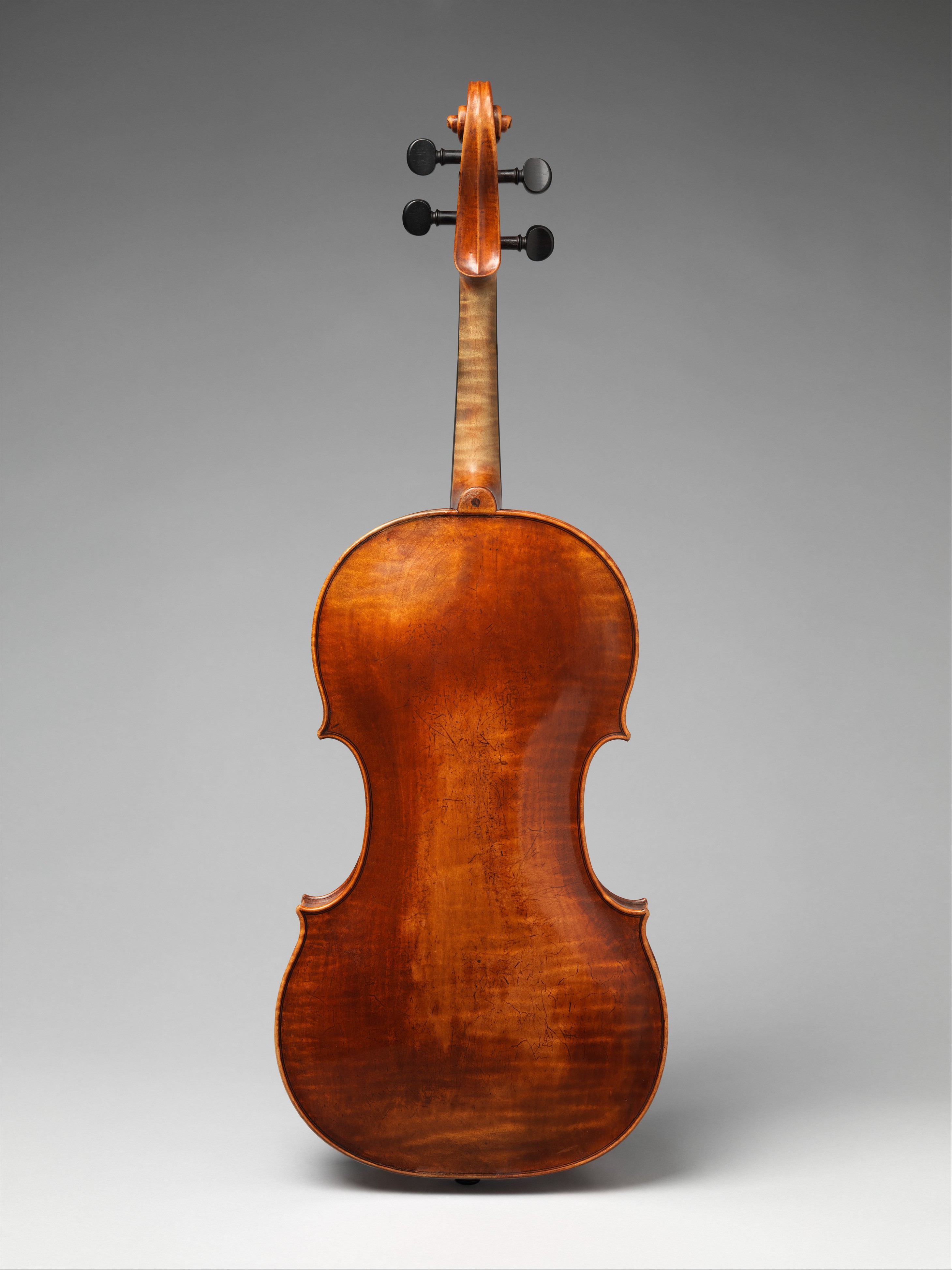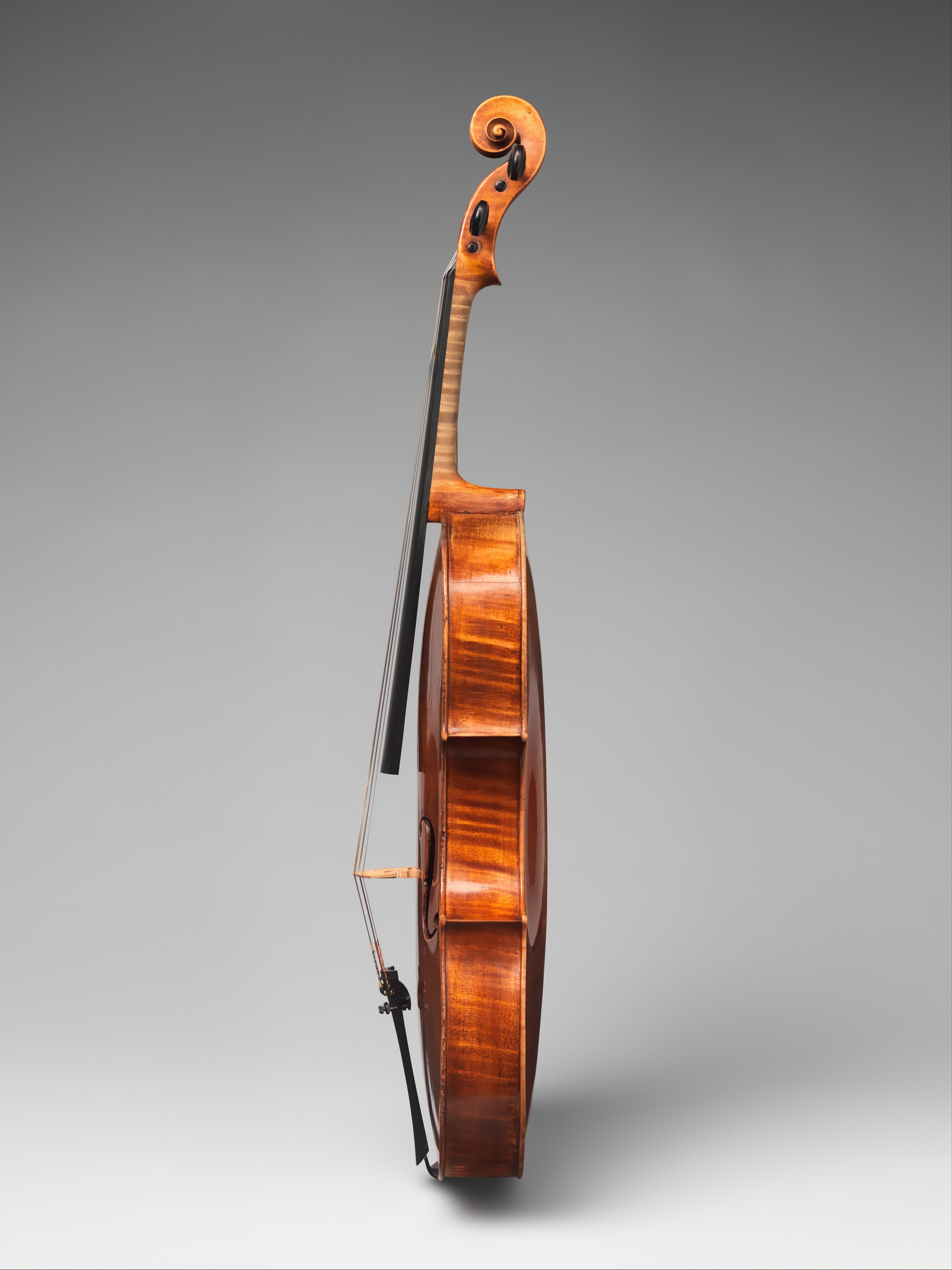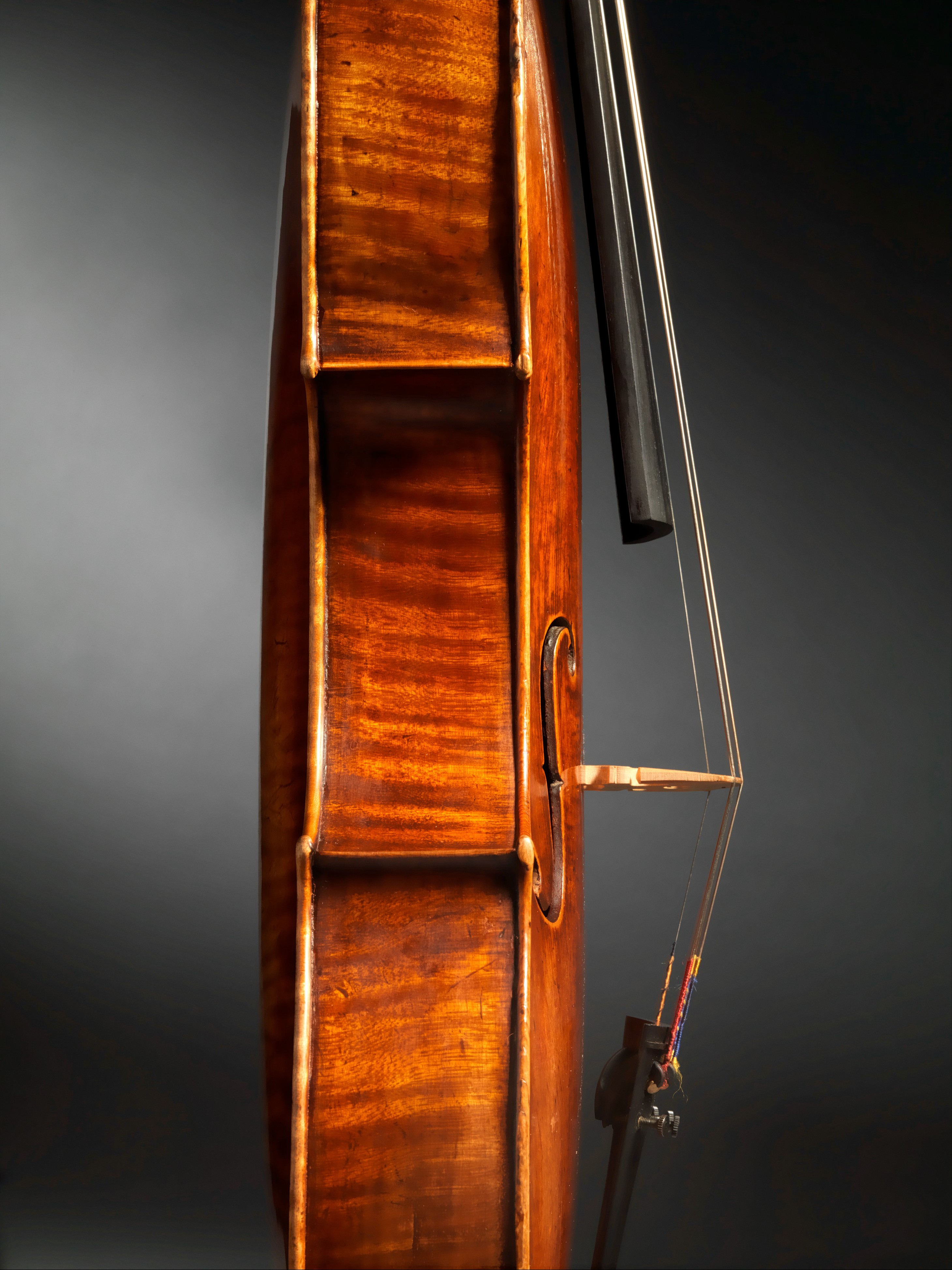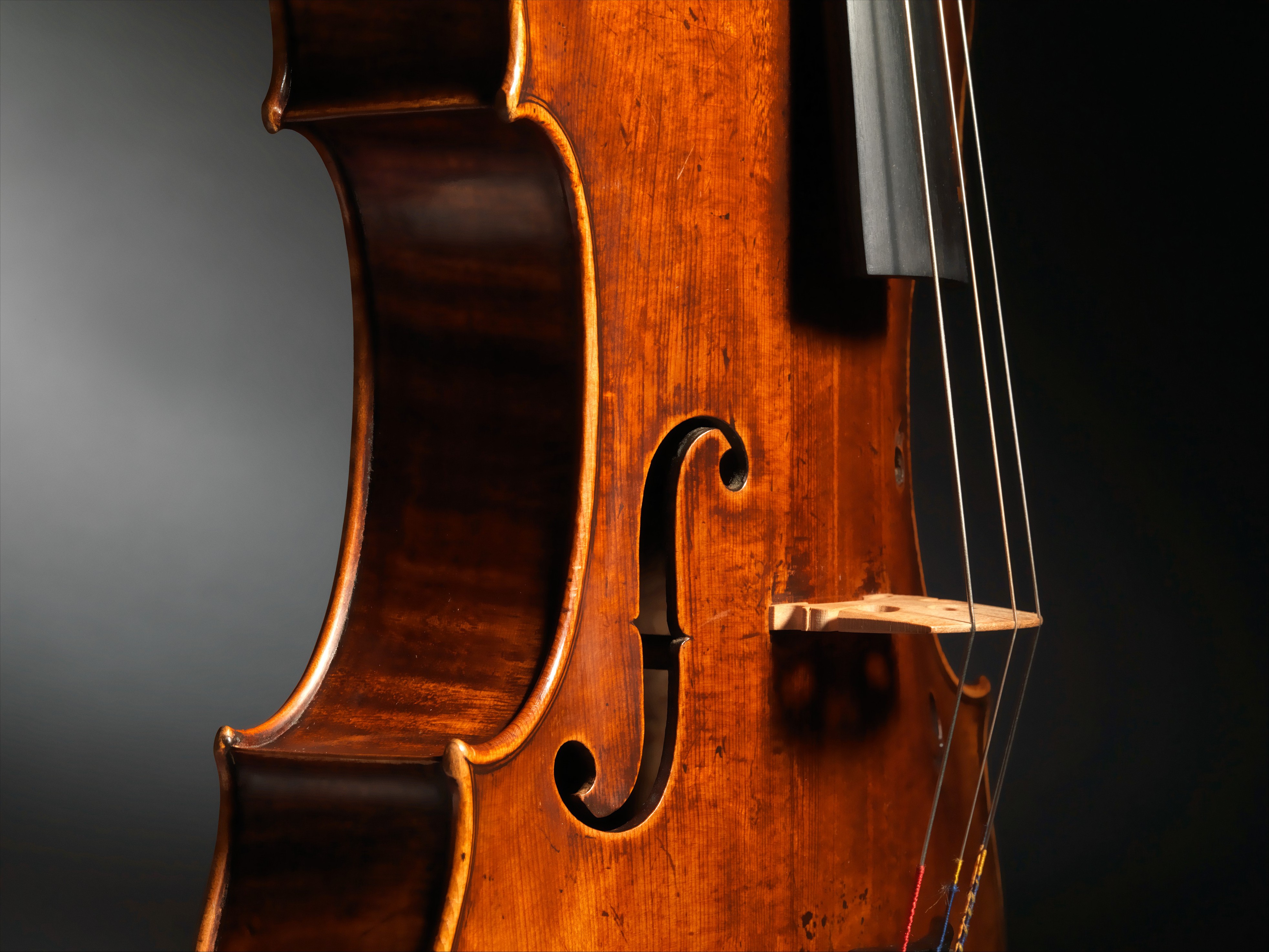Viola
Jacob Stainer Austrian
Jacob Stainer is known as the "Father of the German violin" and his instruments were favorites of the Bach and Mozart families. They remained the most sought-after violins and violas in the world until the beginning of the 19th century. Stainer’s instruments are characterized by their very full arching, vertical f-holes with well-proportioned eyes and by their meticulous workmanship throughout.
During the 17th century, violas were true tenor instruments with large bodies and often had tall ribs. As repertoire became more demanding, makers built smaller violas and cherished old instruments were cut down. This viola is one of the few surviving from the 17th century that has not been reduced in size.
#Capriccio in c minor for solo viola by Henri Vieuxtemps, performed by Walter Küssner, viola, 2014.
-
Capriccio in c minor for solo viola by Henri Vieuxtemps, performed by Walter Küssner, viola, 2014.
-
"A Set of Tunings" by Thomas Baltzar (1630-1663). Performed by Peter Sheppard Skærved on a viola made by Jacob Stainer, ca. 1660 at The Metropolitan Museum. Recorded in 2022.
Playlist
Due to rights restrictions, this image cannot be enlarged, viewed at full screen, or downloaded.
This artwork is meant to be viewed from right to left. Scroll left to view more.


